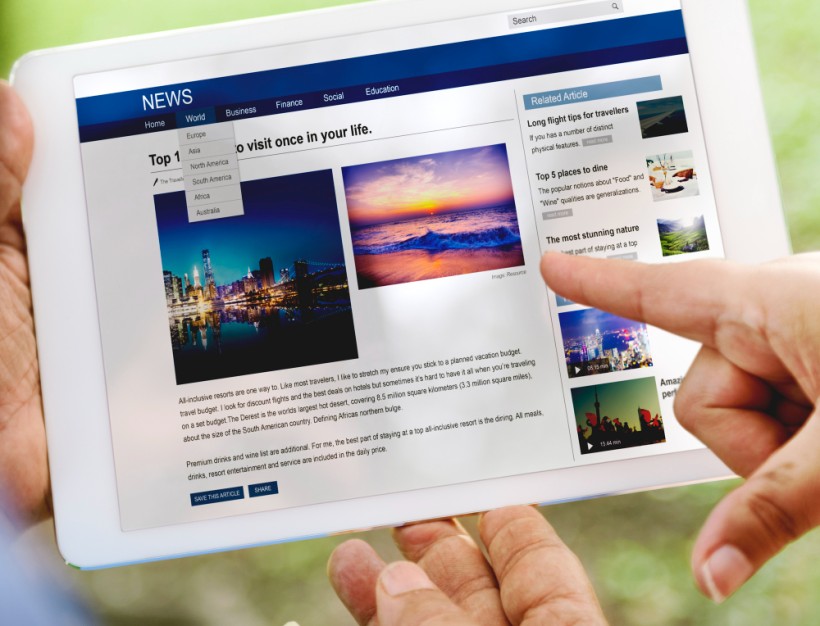If you’re a founder, CEO, or senior leader, your LinkedIn presence is no longer optional. Your reputation—how people see and trust you—directly impacts your business.
We’ve seen it time and time again: companies with visible, engaged leaders build trust faster, attract more opportunities, and close more deals. And the data backs it up—up to 43% of a company’s market value is tied to the reputation of its CEO.
The days of hiding behind a corporate logo are over. Your customers, investors, and employees want to know who’s behind the business.
And the best way to show them?
LinkedIn.
The Data: Why Executive Branding Works (And Why Most Leaders Still Get It Wrong)
A decade ago, most CEOs and executives operated behind the scenes. Their visibility was limited to boardrooms, investor calls, and the occasional media feature. Today, that’s no longer enough.
Customers, investors, and employees expect to see and hear from leadership. They want to know the people driving the business, what they stand for, and whether they can be trusted. And when executives stay silent, they risk looking disconnected—or worse, irrelevant.
Visibility isn’t just about awareness. It’s a business asset. And the numbers prove it:
→ 87% of executive committee members now have a LinkedIn presence, yet only 55% of FTSE 100 CEOs post regularly.
→ 82% of consumers trust a company more when its executives are visible online—because people trust people, not faceless brands.
→ Investors and stakeholders are far more confident in businesses where leadership is vocal and engaged.
→ 80% of employees research a CEO before joining a company. A strong executive brand attracts and retains top talent.
→ Employee retention improves by 80% when the CEO is seen and heard online—because culture starts at the top.
Yet despite all this, most executives still get LinkedIn wrong.
Some have profiles, but they’re incomplete or read like outdated resumes. Others only post corporate press releases, which get little to no engagement. Many leaders still believe that social media is for personal use, failing to see that LinkedIn is a direct channel to decision-makers, investors, and future talent.
Here’s a reality check: company pages on LinkedIn don’t perform nearly as well as personal profiles. A post from a CEO gets 2-3× more engagement than the same post from a corporate account.
Why? Because people connect with people.
Your LinkedIn presence isn’t just about what you say—it’s about how you’re perceived. And in a digital-first world, your visibility as a leader can make or break business opportunities before you even step into a meeting.
The LinkedIn Playbook for Executive Branding
Building an executive brand on LinkedIn doesn’t mean turning into an influencer or posting motivational quotes every day. It means strategically positioning yourself as an authority in your industry—the go-to person your customers, investors, and employees look to for insights and leadership.
The best part? You don’t need to spend hours each week doing it. You just need a structured, repeatable system. Here’s how to build a strong personal brand on LinkedIn without overwhelming your schedule.
Step 1: Optimize Your Profile (Your Digital First Impression)
Before you even post, your LinkedIn profile needs to be a strong representation of who you are and what you stand for.
Profile photo – A professional yet approachable headshot (this alone increases profile views by 21×).
Headline – Skip the generic job title. Instead of just “CEO at XYZ Company,” try adding: “Helping businesses scale through AI-powered automation” (this clarifies your expertise).
About section – Tell your story in a compelling way. Include:
→ What you do and why you do it
→ Your key accomplishments and company mission
→ A strong call to action (e.g., “Follow me for insights on scaling B2B companies” or “DM me to connect”)
Featured section – Showcase key content: interviews, white papers, or top-performing posts.
Step 2: Publish Thought Leadership Regularly
Most executives either post too little or post the wrong kind of content. The key is to be strategic—focusing on insights over self-promotion.
The best-performing executive content falls into four main categories:
Industry insights – Break down complex topics into simple takeaways. Example: “AI is transforming B2B sales. Here’s what leaders need to know in 2024.”
Lessons from experience – Share leadership insights, mistakes, and lessons learned. Example: “I made this hiring mistake early in my career. Here’s how you can avoid it.”
Engaging storytelling – Share personal stories that tie back to business lessons. Example: “In 2010, I almost shut down my company. Here’s what saved it.”
Company vision and values – Show people what you stand for. Example: “Why we prioritize hiring ex-founders at our company—and how it’s helped us scale.”
Tip: Post at least twice a month—ideally weekly—to maintain visibility without overwhelming your schedule. Get more LinkedIn post ideas for leaders here.
Step 3: Engage, Don’t Just Broadcast
The biggest mistake executives make? Posting but not engaging.
Social media is a two-way street. To build an engaged audience, you need to interact.
→ Comment on relevant posts – This puts you on the radar of industry leaders and prospects.
→ Respond to comments on your own posts – Builds trust and community.
→ Send meaningful connection requests – No cold pitches. Just genuine networking.
Engagement is how LinkedIn’s algorithm works—the more you interact, the more visible your posts become.
Step 4: Balance Authenticity with Strategy
People connect with real people, not PR-polished executives.
→ Show personality. Speak like a human, not a corporate press release.
→ Share wins—but also failures and lessons learned. Vulnerability builds trust.
→ Don’t try to be perfect—just be you (but with a clear, professional message).
Executives who mix insights with authentic storytelling build stronger trust and engagement.
Step 5: Leverage Thought Leader Ads (TLAs) for Scale
Organic reach is great, but LinkedIn Thought Leader Ads (TLAs) are the fastest way to amplify your personal brand.
Unlike traditional ads, TLAs promote your best-performing LinkedIn posts to a highly targeted audience (decision-makers, investors, potential customers).
Why TLAs work:
→ Posts from executives feel more authentic than traditional ads.
→ Higher engagement: Unlike company ads, they drive real conversations.
→ More exposure: Gets your insights in front of the right people—not just your existing network.
At Column, we specialize in crafting executive LinkedIn strategies—including TLAs—to position leaders as the #1 authority in their industry.
Case Studies: How Leading Executives Are Winning on LinkedIn
The best executives on LinkedIn don’t just talk—they lead conversations. They use the platform to shape industry discussions, attract opportunities, and build long-term trust with their audience.
Take Richard Branson—his personal brand fuels Virgin’s global appeal. By sharing stories, business lessons, and behind-the-scenes insights, he makes Virgin feel more human and relatable.
Satya Nadella transformed the perception of Microsoft’s brand by actively posting about leadership, innovation, and company culture. His presence on LinkedIn isn’t just about Microsoft—it’s about shaping the future of work.
Even in highly regulated industries like finance, executives are leveraging LinkedIn. CEOs from HSBC, Standard Chartered, and NatWest are among the top FTSE 100 leaders using LinkedIn to communicate directly with customers and investors.
At Column, we’ve helped B2B founders and executives achieve similar success. One of our clients grew their LinkedIn impressions from 5,000 to over 100,000 in under 60 days, leading to inbound leads, partnerships, and increased industry authority.
Want to see more examples of leaders we’ve worked with? Check out our case studies here.
Industry-Specific Approaches to Executive Branding
Not all industries approach executive branding the same way. The key is knowing how to position yourself while staying relevant to your audience.
Finance & Healthcare
Many leaders in finance and healthcare hesitate to post due to compliance concerns. But thought leadership doesn’t have to mean sharing financial forecasts. Instead, executives can build trust by discussing market trends, leadership insights, and industry best practices—all within regulatory guidelines.
Technology
Tech leaders are expected to be forward-thinking. The best ones use LinkedIn to simplify complex topics, share their vision for the future, and attract talent. Whether it’s AI, SaaS, or cybersecurity, founders who post regularly build credibility faster than those who don’t. See our Momentum case study.
B2B Enterprises
In industries with long sales cycles, trust is everything. CEOs who break down complex solutions into digestible insights make their companies more approachable. Sharing case studies, thought leadership, and behind-the-scenes perspectives helps convert potential customers.
Consumer & Retail
Customers want to know who’s behind the brand. Retail and DTC founders who engage directly with their audience—sharing company values, product innovation, and customer stories—create stronger loyalty. See our Growthhit case study.
No matter the industry, executive branding is now a business asset. We tailor LinkedIn strategies for each industry at Column, ensuring leaders maximize their visibility while staying authentic.
Common Objections to Executive Branding (And How to Overcome Them)
A lot of executives hesitate when it comes to building a personal brand on LinkedIn. Here are some common concerns—and ways to think about them differently.
💬 “I don’t have time.” → That’s fair. But you don’t need to post every day or spend hours on it. Even a few well-placed posts a month can make a big impact. Many leaders work with teams to streamline the process.
💬 “I don’t want to sound inauthentic.” → The best executive brands reflect real perspectives, not PR-polished content. If you focus on sharing insights, experiences, and what you truly care about, authenticity follows naturally.
💬 “What if I say the wrong thing?” → Thoughtful, strategic messaging helps avoid missteps. It’s about contributing to conversations in a way that aligns with your values and expertise.
💬 “Will this actually help my business?” → Visibility isn’t just about engagement—it’s about building trust with customers, investors, and potential hires. Done right, it opens doors.
Why Now? The Future of Executive Branding & LinkedIn’s Role
Executive branding isn’t a trend—it’s becoming a business necessity. More leaders are recognizing that visibility isn’t just about marketing; it’s about trust, influence, and opportunity.
LinkedIn remains the most effective platform for executives to connect with decision-makers, talent, and industry peers. With over 1 billion members, it’s where leadership conversations happen.
As AI and content saturation increase, those who establish credibility now will stand out in the future. Executives who embrace thought leadership today will be the ones shaping industries tomorrow. The question isn’t if you should build your brand—it’s when.
Final Thoughts on Executive Branding
The role of leadership is changing. Customers, employees, and investors no longer just look at a company’s product—they look at the people behind it.
Executives who build a strong personal brand don’t just gain visibility; they gain trust, influence, and opportunities. Thought leadership isn’t about being the loudest voice in the room—it’s about showing up consistently with insights that matter.
The leaders shaping industries tomorrow are the ones making themselves visible today.
If you’re ready to build a strong executive presence without it taking over your schedule, learn more about how we can help.
Mo is the founder and CEO of Column, helping leaders shape public opinion through content and research. Connect with him on LinkedIn.





